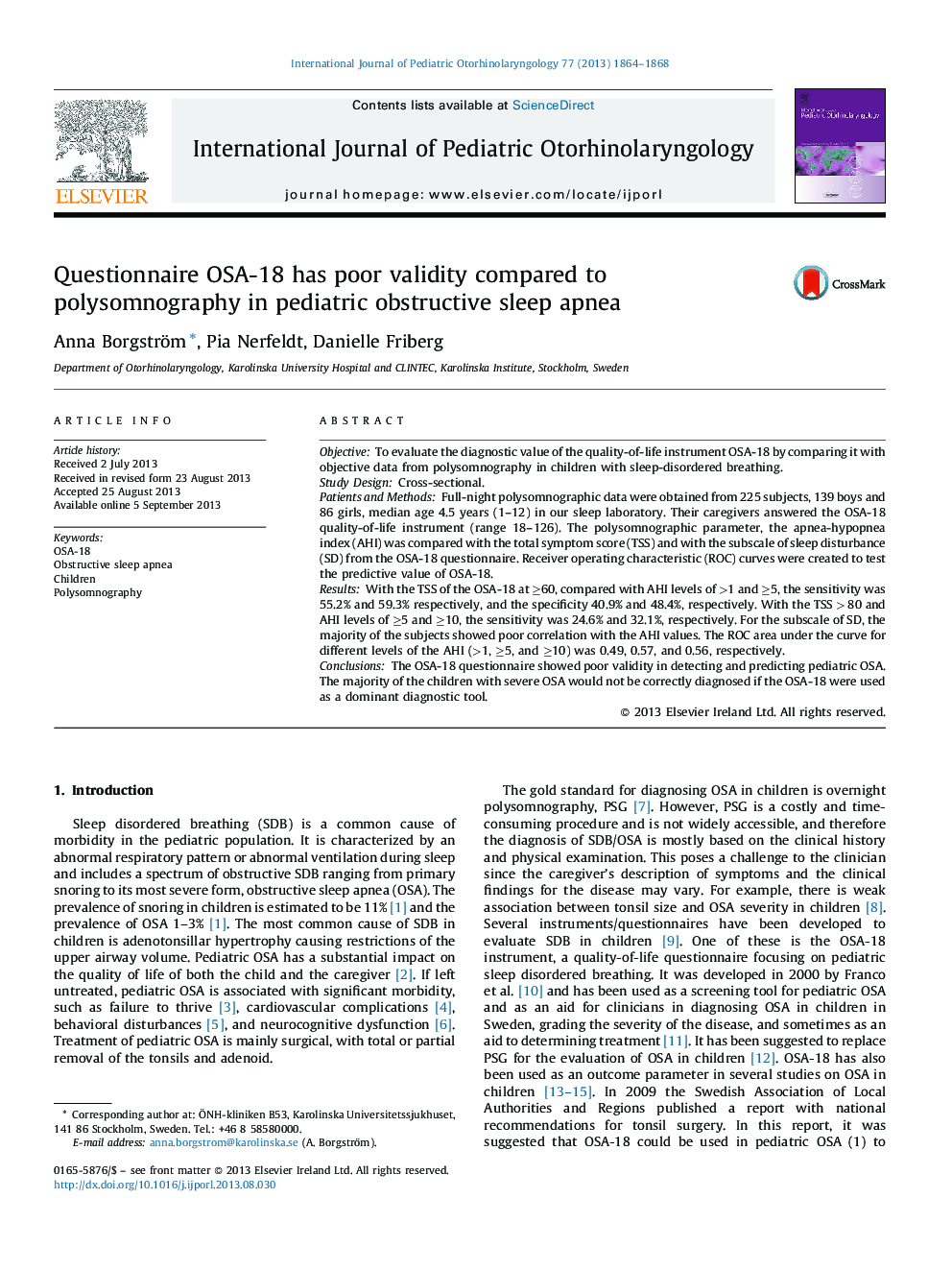| Article ID | Journal | Published Year | Pages | File Type |
|---|---|---|---|---|
| 6213962 | International Journal of Pediatric Otorhinolaryngology | 2013 | 5 Pages |
ObjectiveTo evaluate the diagnostic value of the quality-of-life instrument OSA-18 by comparing it with objective data from polysomnography in children with sleep-disordered breathing.Study DesignCross-sectional.Patients and MethodsFull-night polysomnographic data were obtained from 225 subjects, 139 boys and 86 girls, median age 4.5 years (1-12) in our sleep laboratory. Their caregivers answered the OSA-18 quality-of-life instrument (range 18-126). The polysomnographic parameter, the apnea-hypopnea index (AHI) was compared with the total symptom score (TSS) and with the subscale of sleep disturbance (SD) from the OSA-18 questionnaire. Receiver operating characteristic (ROC) curves were created to test the predictive value of OSA-18.ResultsWith the TSS of the OSA-18 at â¥60, compared with AHI levels of >1 and â¥5, the sensitivity was 55.2% and 59.3% respectively, and the specificity 40.9% and 48.4%, respectively. With the TSS > 80 and AHI levels of â¥5 and â¥10, the sensitivity was 24.6% and 32.1%, respectively. For the subscale of SD, the majority of the subjects showed poor correlation with the AHI values. The ROC area under the curve for different levels of the AHI (>1, â¥5, and â¥10) was 0.49, 0.57, and 0.56, respectively.ConclusionsThe OSA-18 questionnaire showed poor validity in detecting and predicting pediatric OSA. The majority of the children with severe OSA would not be correctly diagnosed if the OSA-18 were used as a dominant diagnostic tool.
